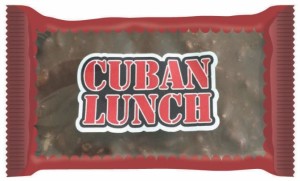Can an old trademark be reborn… with a new owner?
By Richard Stobbe
When a Canadian woman looked to buy CUBAN LUNCH brand chocolate bars for her mother, she found the product was discontinued.

It appears that an Albertan, Crystal Regehr Westergard, saw an entrepreneurial opportunity.  After realizing the product had been abandoned by the original manufacturer, and the Winnipeg factory that made Cuban Lunch closed down nearly three decades ago, she decided to remake the product herself, and revive the trademark. The original trademark CUBAN LUNCH was registered in Canada in 1983 for “Confectionery namely chocolate bars”, claiming use in Canada since December 1948. After being passed through a number of different owners throughout the late 1990s up until 2013, the original trademark was finally expunged from the register at the Canadian Intellectual Property Office in 2015 for failure to renew. 1948-2015. Not a bad run for a candy bar brand.  This is usually the end of the line for an aging trademark, where the product has been discontinued.
The Westergards submitted a new trademark application to the Canadian Intellectual Property Office for the CUBAN LUNCH trademark, listing the same goods, and claiming use since May 2017.
This raises an interesting trademark question: Can an old, retired trademark be reborn with a new owner?
In Canada, trademark rights are based on use. Once use begins, trademark rights come alive. When use ceases, trademark rights die out. It’s important to remember that the registered rights recorded in the trademarks office are merely reflective of the actual use of that mark in the marketplace.  To use the more eloquent phrasing of the Supreme Court of Canada: “Registration itself does not confer priority of title to a trade-mark. At common law, it was use of a trade-mark that conferred the exclusive right to the trade-mark. While the Trade-marks Act provides additional rights to a registered trade-mark holder than were available at common law, registration is only available once the right to the trade-mark has been established by use.” (Emphasis added) (Masterpiece Inc. v. Alavida Lifestyles Inc., [2011] 2 SCR 387, 2011 SCC 27 (CanLII))
Trademark rights lapse and die all the time, where the rights are no longer used, and are therefore legally extinguished. In theory, there is no reason why a new business owner cannot commence use of a “dead” mark and notionally adopt that mark as their own, breathing new life into the trademark rights through their own use of the mark with their own product. Of course, it’s important to note that even if registered rights lapse (for example, for failure to pay renewal fees), the underlying common law rights might continue. Let’s say a registration lapsed because of a clerical oversight; this oversight alone would not impact the underlying commercial use of the mark which might be alive and well. As noted above, registration is merely an official recordal of the rights endowed by actual use.
In the case of the CUBAN LUNCH mark, the reports appear to indicate that the original mark suffered a death both in actual commercial use and in registration. If that’s the case, then the original trademark is no longer a trademark, and those words are free to be adopted by a new owner.
Now… it’s high noon. Where do we buy a CUBAN LUNCH ?
Calgary – 07:00
No comments